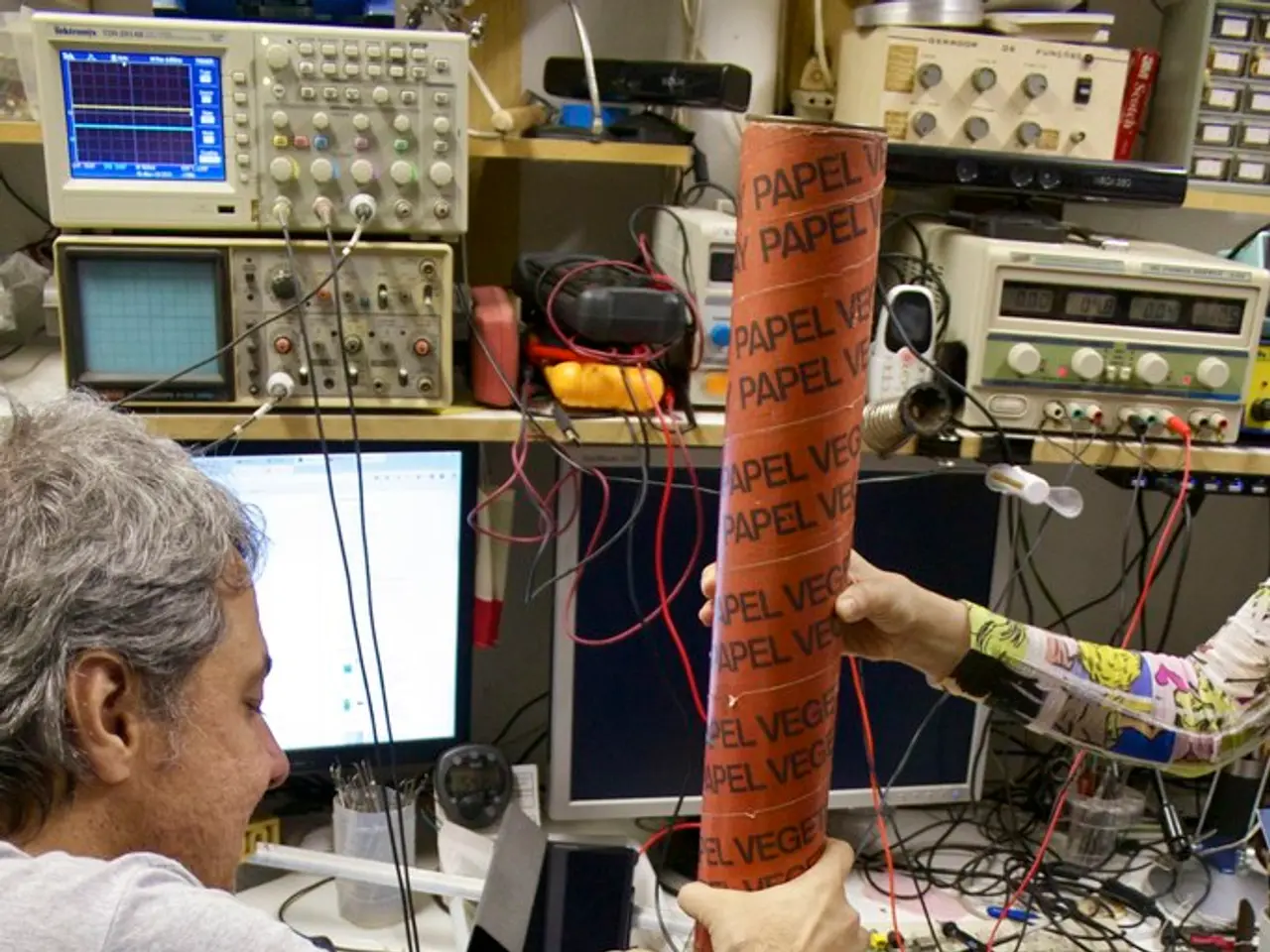Meta's novel wearable device enables screen manipulation sans physical contact
Meta's Revolutionary sEMG Wristband: A Leap Forward in Gesture Control Technology
Meta, the tech giant known for its virtual reality innovations, has unveiled a groundbreaking new technology: the sEMG wristband. This wearable device, developed by Meta's Reality Labs team, represents a significant step towards a future where keyboard, mouse, and touchscreen may be replaced by simple, intuitive gestures.
The sEMG wristband works by sensing the electrical signals generated by nerve impulses in the wrist muscles that control finger movements. This method, called surface electromyography (sEMG), allows the device to understand hand gestures without the need for a screen, controller, or touch.
The wristband's metal contacts detect these tiny electrical impulses on the skin, decoding muscle activation signals into specific gestures like tapping, pinching, swiping, handwriting characters in the air, and rotating the wrist to control cursors or interfaces. This enables users to interact with AR interfaces or computers without physically moving their hands into view, speaking aloud, or using traditional input devices like keyboards or mice.
The sEMG wristband's AI models are trained on data from thousands of people, ensuring high accuracy and versatility. The system can write in the air at 20.9 words per minute, nearly as fast as typing on a phone. It also offers important accessibility advantages by enabling hands-free or subtle muscle-based control for people with reduced mobility or muscle weakness.
Meta is releasing a public dataset of sEMG recordings from 300 participants to encourage further research. This move could accelerate progress in areas like prosthetics, gaming, and accessibility tech. The glasses' sensor technology opens up new possibilities for research and development in augmented reality applications.
Meta's sEMG research device, called sEMG-RD, has been described in Nature. The technology brings a vision of replacing keyboard, mouse, and touchscreen with simple, intuitive gestures closer to reality. The wristband can change how users interact with devices, offering less strain, more freedom, and a new way to stay connected on the go.
It's important to note that the wristband is still in the research phase and not yet available to consumers. However, Meta's new AR glasses with heart rate monitoring and enhanced voice recognition are already on the horizon, further demonstrating the company's commitment to pioneering human-computer interaction.
In conclusion, Meta’s sEMG wristband converts the nervous system’s intended finger and hand movements into digital commands using non-invasive surface electromyography sensors and AI, enabling intuitive gesture control in AR and improved accessibility. This technology reimagines how we access digital tools, making everyday tasks quicker, easier, and more inclusive.
The sEMG wristband, a groundbreaking technology from Meta, not only works for gesture control in AR but also sets the stage for the integration of smart-home devices and gadgets, as it allows for hands-free, intuitive interaction. The AI models trained on this technology can potentially lead to advancements in artificial-intelligence, offering solutions for areas like prosthetics, gaming, and accessibility tech.




